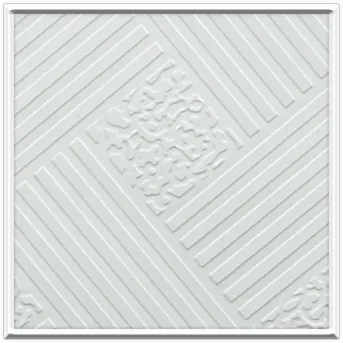- Afrikaans
- Albanian
- Amharic
- Arabic
- Armenian
- Azerbaijani
- Basque
- Belarusian
- Bengali
- Bosnian
- Bulgarian
- Catalan
- Cebuano
- Corsican
- Croatian
- Czech
- Danish
- Dutch
- English
- Esperanto
- Estonian
- French
- German
- Greek
- Hindi
- Indonesian
- irish
- Italian
- Japanese
- Korean
- Lao
- Malay
- Myanmar
- Norwegian
- Norwegian
- Polish
- Portuguese
- Romanian
- Russian
- Serbian
- Spanish
- Swedish
- Thai
- Turkish
- Ukrainian
- Uzbek
- Vietnamese
Dhj . 26, 2024 09:59 Back to list
ceiling hatch door
The Importance of Ceiling Hatch Doors in Modern Architecture
In the realm of modern architecture and building design, where functionality meets aesthetic appeal, various components play crucial roles in enhancing the overall design and utility of a space. One such often-overlooked element is the ceiling hatch door. This functional yet essential feature has been changing the dynamics of how we utilize space, particularly in commercial and residential buildings.
Understanding Ceiling Hatch Doors
Ceiling hatch doors, often referred to as access hatches or ceiling access panels, are designed to provide a convenient opening to the areas above the ceiling, such as attics, maintenance areas, or mechanical spaces. These hatches are particularly important in buildings where regular access to these spaces is necessary for maintenance, inspections, or repairs.
Types of Ceiling Hatch Doors
There are various types of ceiling hatch doors, each tailored to specific applications and functionalities. The most common types include
1. Drop-Down Hatches These are hinged panels that drop down for easy access. They are ideal for spaces that require a frequent need for access without permanent stairways.
2. Folding Hatches These hatches fold out of the way, allowing for larger openings—perfect for moving equipment in and out of the space above.
3. Fire-Rated Hatches In commercial buildings, safety is a paramount concern. Fire-rated ceiling hatch doors are designed to resist fire for a certain period, thus providing protection and ensuring compliance with safety standards.
4. Acoustic Hatches In environments where noise control is critical, acoustic ceiling hatches are designed to minimize sound transmission.
5. Security Hatches For areas that require an additional layer of protection, security hatches can be locked and are often constructed from robust materials.
Functional Benefits
The significance of ceiling hatch doors transcends their basic function of providing access
. They offer several practical benefitsceiling hatch door

- Space Efficiency In urban environments where space is at a premium, ceiling hatches help maximize vertical space utilization. This efficiency is critical in multi-story buildings or those with limited footprint.
- Ease of Maintenance Regular maintenance of HVAC systems, electrical wiring, and plumbing is essential for building operations. Ceiling hatches facilitate easier and faster access to these systems, reducing downtime and labor costs.
- Aesthetic Continuity Modern ceiling hatch doors are designed to blend seamlessly with the surrounding ceiling. This aesthetic consideration ensures that these functional hatches do not disrupt the overall design of the space.
- Enhanced Safety By providing easy access for inspections, ceiling hatches can help prevent hazardous conditions that might arise from neglecting maintenance checks.
Practical Applications
Ceiling hatches have found their place in various environments
- Residential Buildings They allow homeowners to access attics, which can serve as storage or additional living space.
- Commercial Spaces In offices, retail stores, and warehouses, ceiling hatches ensure that maintenance personnel can quickly access important infrastructure without disturbing the daily operations.
- Industrial Settings These hatches are crucial in factories and plants where machinery or mechanical installations are located overhead.
Conclusion
In summary, ceiling hatch doors are vital components in both residential and commercial architecture. They not only provide necessary access for maintenance and inspections but also contribute to the overall efficiency and safety of a building. As industries continue to innovate and seek solutions for optimizing space and functionality, the importance of ceiling hatch doors will undoubtedly grow.
In an era where building design is as much about utility as it is about aesthetics, the humble ceiling hatch door stands as a testament to the intersection of form and function. Whether in homes, offices, or industrial settings, these access points will continue to play an essential role in shaping the architectural landscape of the future.
-
Transform Interiors with PVC Gypsum Ceiling: A Stylish, Durable, and Moisture-Resistant SolutionNewsMay.19,2025
-
The Smart Interior Upgrade: Discover the Durability and Versatility of Gypsum Ceiling Access Panel SolutionsNewsMay.19,2025
-
The Smart Choice for Interior Design: Discover the Value of PVC Gypsum Ceiling SolutionsNewsMay.19,2025
-
Mineral Fiber Ceiling Tiles: The Smart Blend of Performance and AestheticsNewsMay.19,2025
-
Mineral Fiber Ceiling Tiles: The Superior Choice Over Gypsum for Sound and Fire SafetyNewsMay.19,2025
-
Mineral Fiber Ceiling Tiles: Eco-Friendly Strength and Style for Every CeilingNewsMay.19,2025







